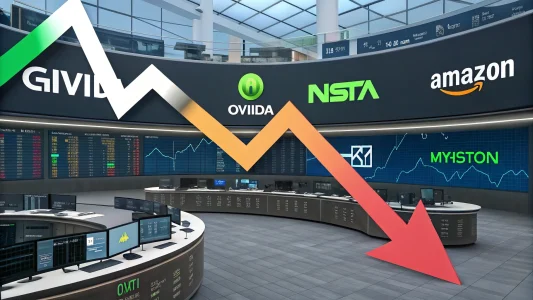The IRA is a cornerstone for many, allowing you to build a nest egg with investments that fit your risk profile. You pick the financial institution; you manage the investments. In other words, it’s your retirement, your way. However, you should look closer at Roth IRAs to maximize your long-term financial security.
Why the buzz around Roth IRAs? It’s all about the tax advantage. Although you contribute after-tax dollars, there is no tax deduction upfront. You can grow your investments tax-free and withdraw qualified funds tax-free in retirement. Just imagine enjoying your golden years without worrying about Uncle Sam taking a bite of your earnings. Furthermore, Roth IRAs allow you to withdraw your contributions tax-free and penalty-free at any time, and you will not be required to make Required Minimum Distributions (RMDs) during your lifetime.
If you’ve decided to harness the power of a Roth IRA, here’s the big question. What investments should you prioritize to make the most of this powerful tool? And, perhaps even more importantly, what should you steer clear of?
This post will guide you through the investment landscape of Roth IRAs. Specifically, you’ll learn how to supercharge your savings by highlighting the investments that offer tax-free growth. As well as pointing out the pitfalls to avoid, I’ll explain how to navigate your Roth IRA confidently and effectively. So, let’s dive in and unlock the potential of your tax-free retirement.
Table of Contents
ToggleThe Roth IRA Myth Debunked
Let’s start by clarifying a common misconception: Roth IRAs are not investments. Instead, it’s an investment vehicle or account that allows you to hold investments within it. Think of the Roth IRA as a car that drives you toward “Tax-Free Land.” Your investments will be your passengers — stocks, bonds, ETFs, and more. Your goal? Choose the right passengers to maximize the tax-free growth Roth IRAs offer.
Because Roth IRAs offer tax-free growth and tax-free withdrawals in retirement, you should invest in investments with high growth potential.
Bank vs. Online Broker: Which Is Better for a Roth IRA?

Next, if you’re considering opening a Roth IRA, you might wonder whether you should do so through a bank or an online broker. Well, here’s the deal;
- Banks usually offer CDs (Certificates of Deposit), savings, and money market accounts with low returns. While these are “safe,” they don’t take advantage of Roth IRAs’ tax-free growth.
- On the other hand, an online broker like Fidelity Investments or M1 Finance offers various investments, including stocks, ETFs, and mutual funds. This is the place to go if you’re looking to invest in long-term, high-growth companies.
Ultimately, an online broker is the better choice if you want to grow your wealth over the long term.
Investments to Avoid in a Roth IRA
Certain investments don’t belong in a Roth IRA. The reason? Either they’re too conservative, or they’re too expensive. Here’s what to steer clear of;
- CDs, Money Markets, and Savings Accounts. Although their returns are safe, they will not benefit fully from tax-free compounding.
- Fixed Annuities. Yes, these offer tax-deferral benefits. But you already get tax-free growth with a Roth IRA. Aside from that, they are often low-return investments.
- Municipal Bonds. Since these are already tax-free, putting them in a Roth IRA is redundant and limits your growth potential.
- Variable Annuities are an expensive and unnecessary option because they have high fees and duplicate the tax-free benefits of Roth IRAs.
- Penny Stocks. Despite the promise of a huge return, the high risk of losing everything means you’re burning your annual contribution if things go south.
The Best Investments for Your Roth IRA
Let’s now discuss the investments that make sense for Roth IRAs—those with high growth potential and compounding potential over time.
The Paycheck Stock Method: Earn While You Invest
With the Paycheck Stock Method, you can earn money while investing. Investing this way focuses on dividend-paying stocks — companies that regularly share a portion of their profits with shareholders.
Imagine owning enough Verizon or AT&T shares to receive dividend payments that cover your monthly cell phone bill. This is a simple yet effective way to convert your investments into a passive income stream.
You can find a reliable list of dividend-paying stocks at Dividend Aristocrats. It’s a list of companies with a good track record of paying dividends and increasing them annually. By investing in these, you’ll receive a “paycheck” each year that grows over time.
Pro Tip: You can invest in expensive stocks by purchasing fractional shares from platforms like M1 Finance. This results in a diversified dividend portfolio that can be built on a smaller budget.
Get Techie: High-Risk, High-Reward Investments
If you’re willing to take on more risk for higher returns, consider adding technology stocks to your Roth IRA. Tech companies often emphasize growth over dividends, meaning profits are reinvested for expansion.
Think about companies like Google (now Alphabet) and Apple. Over time, early investors have seen substantial gains in these tech giants. Investing in tech as part of a Roth IRA allows you to take advantage of tax-free gains.
There are several popular high-growth tech stocks that fall under the FAANG (Facebook, Apple, Amazon, Netflix, Google) umbrella. Even though some companies have evolved (like Facebook becoming Meta), the concept remains the same: invest in innovative companies to shape the future.
Pro Tip: If you’re unsure which tech stocks to invest in, consider companies leading in clean energy, artificial intelligence, and cloud computing.
Buy It Like Buffett: Value Investing for the Long Haul
For those seeking a more conservative, research-driven approach, why not take a cue from Warren Buffett? For those unfamiliar, in the “Buy It Like Buffett” method, undervalued companies with strong fundamentals are held for the long term.
To understand Buffett’s investment strategy, look at Berkshire Hathaway’s portfolio. Among Berkshire’s holdings are some of the world’s most successful companies. Mirroring their investments can help you tap into a proven value-investment approach.
Pro Tip: To simplify things even further, buy Berkshire Hathaway stock (BRK.B), which gives you exposure to Buffett’s entire portfolio in one purchase.
Real Estate in Your Roth: Invest Beyond the Stock Market
Did you know you can invest in real estate with a Roth IRA? Fundrise, for example, allows Roth IRA holders to invest in real estate through a Roth IRA. The advantage of this approach is that it provides exposure to real estate’s growth potential without the hassle of managing the property.
Even if you have multiple Roth IRAs, you can only contribute a combined total of $6,000 a year (or $7,000 if you’re 50 or older). As a result, part of your contribution could be allocated to a traditional brokerage account, while part could be allocated to a real estate platform.
Pro Tip: If you are interested in alternative investments, such as real estate, private equity, or even farmland, you might want to consider self-directed IRAs.
Adding Cryptocurrency: Embrace the Digital Future

You can even invest in cryptocurrency like Bitcoin inside a Roth IRA if you are interested in cutting-edge investments. While some custodians require more setup, you can invest in digital assets within your retirement account through services like Bitcoin IRA and iTrust Capital.
Even though cryptocurrency is notorious for its volatility, it is a compelling investment option thanks to the possibility of tax-free growth within a Roth IRA. Upon retirement, gains from Bitcoin or other cryptocurrencies might be tax-free if they experience the growth many predict.
Pro Tip: Before investing in crypto, consult with a tax professional to understand the risks and regulations associated with holding digital assets in a Roth IRA.
Why Diversification Matters in Your Roth IRA
By diversifying your Roth IRA across different investment types, such as dividend stocks, tech stocks, value plays, real estate, and cryptocurrency, you can create a balanced approach to meet your financial goals and risk tolerance.
If you’re new to investing or just starting a Roth IRA, platforms like M1 Finance, Fundrise, and Bitcoin IRA are user-friendly ways to diversify your portfolio.
Final Thoughts
Are you looking for a stable income and the explosive growth potential of tech? If so, Buffett’s value-based strategy, tangibility in real estate, or the digital frontier of cryptocurrency, a Roth IRA, allows you to customize your investments while enabling you to grow tax-free.
So why settle for a basic retirement account when you can build a diverse, high-performing Roth IRA? Make the most of this powerful retirement vehicle by exploring your options, taking a few calculated risks, and watching your future self. Thank you.
As always, consult a financial professional before making major investment decisions. And always remember: It’s your money, your life, and your chance to make it awesome.
FAQs
What exactly is a Roth IRA, and why is it beneficial?
Roth IRAs provide tax-free growth and tax-free withdrawals during retirement. When you contribute after-tax dollars, you pay taxes on the money now. But when you retire and meet specific requirements (typically being 59 ½ or older and having the account for at least five years), all your earnings and withdrawals are tax-free.
Because of this, it is especially attractive to those who anticipate being in a higher tax bracket in retirement.
Can I invest in individual stocks in my Roth IRA?
Yes, you can.
You can buy and sell individual stocks within your Roth IRA through many brokerage platforms. You should, however, keep in mind that individual stocks carry a higher level of risk than diversified funds.
What are the contribution limits for a Roth IRA?
Contribution limits may vary each year depending on your income. For the latest information, visit the IRS website.
What are the income limits for contributing to a Roth IRA?
Roth IRA contributions are subject to taxation in addition to income limits. Those with incomes above these limits may not be able to contribute directly. Again, refer to the IRS website for current income limits.
Where can I open a Roth IRA?
Roth IRAs can be opened at most brokerage firms, banks, and online investment platforms.
Popular options include Fidelity, Vanguard, and Charles Schwab.
Consider fees, investment options, and customer service when choosing a brokerage.
Featured Image Credit: Photo by Kampus Production; Pexels
















